There is an abundance of things to see and do in Kenya, a country which boasts some of the Africa's most famous and sought-after tourist attractions. Kenya is essentially a dream destination for African wildlife safaris and most of its attractions revolve around the incredible game reserves and the famous naturalists and wildlife professionals who have worked in the country.Game viewing is a must, with quintessential destinations near Nairobi, like the Masai Mara National Reserve (where Out of Africa was filmed), while Hell's Gate National Park is located in the Great Rift Valley. Visit Elsamere Conservation Centre, where Joy Adamson of Born Freelived, and take in the natural splendour of Lake Naivasha. Visit the Karen Blixen Museum and enjoy the Giraffe Centre and the Sheldrick Elephant Orphanage.Another draw card for Kenyan tourism is the wonderful coastline and paradise beaches. The warm waters of the Indian Ocean are ideal for swimming and watersports, and there are some well-preserved coral reefs to explore beneath the surface. There are a number of popular resorts along the Kenyan coast and Mombasa is an interesting port city. Kenya has pleasant weather throughout the year, making this a great beach holiday destination.
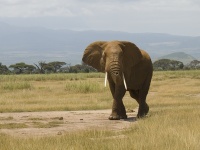
Amboseli is a park of giants, renowned for its herds of mighty tusked elephants presided over by the magnificent backdrop of Africa's highest mountain, Mt Kilimanjaro. One of Africa's most unforgettable images is the picture of these large creatures standing in silent tribute before the gigantic snow-covered mountain just over the border in neighbouring Tanzania. It is a relatively small park with wide plains merging with the distant skyline, affording good visibility in all directions.Observation Hill rises from the centre for breathtaking views over the park and towards Mt Kilimanjaro, especially in the pink light of dawn. Meaning 'Place of Water' in the Masai language, it has a continuous supply from Kilimanjaro's snowmelt, forming underground springs that feed the marshy patches and swamps home to hippos and a great variety of bird life. Predators are relatively scarce apart from jackal and hyena, but there are large numbers of grazers such as wildebeest, zebra and gazelles on the grassy plains and giraffe among the thorn trees. A popular way to take in the scenery is by way of a noiseless microlight flight, either from Nairobi or the Amboseli airstrip. There is a wide range of accommodation in and around the outskirts of the park for those wanting to extend the experience.
Address : Loitoktok District, Rift Valley, Kenya
Website : www.amboseli.com/
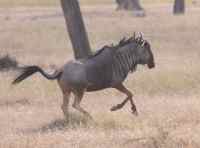
One of Africa's greatest natural spectacles is the annual wildebeest migration between Kenya's Masai Mara and Tanzania's Serengeti national parks happening sometime between June to October each year. Up to two million wildebeest and hundreds of thousands of zebra and Thomson's gazelles make this ancient journey, seeking greener grasses as the seasons change. The quest for new life is closely linked with death as predators stalk the enormous, ever-moving herds, from lions in the grasslands to crocodiles during the dramatic, frenetic river crossings.The river crossings at the Grumeti River and Mara River are the most popular part of the migration to witness and there are many great camps set up near the rivers in the Mara. A thrilling way to experience the migration is on a riding safari, when your horses can actually wander among the animals, or in a hot air balloon, which gives you breathtaking views. The exact timing of the migration varies each year and is difficult to predict, although generally June to October is the best time to plan your visit. The herds usually migrate back to the Serengeti in December and January and some visitors like to try and catch the spectacle in reverse, as the animals return to Tanzania.
Website : www.maratriangle.org
Named for the pair of massive red cliffs of the Njorowa Gorge that encloses a geothermic area of hot springs and steam vents, Hell's Gate is one of the two parks in Kenya that allows visitors to explore on foot, making it an ideal place for hiking, cycling, camping and rock climbing. It is famous for its natural steaming geysers, and the towering cliffs provide an eagle and vulture breeding ground. The wide plains are home to numerous animals, such as zebra, buffalo, eland, gazelle, hartebeest, warthog and baboon and the experience of walking alongside a giraffe or past a herd of zebra is a memorable one.One of the most popular ways to explore the park is to hire bicycles at the park gate and ride unaccompanied down to the gorge. The bikes are not always in the best condition but they are cheap and the journey is a wonderful experience; if you do get tired or stuck with a bad bike the route is patrolled regularly by rangers who give stragglers lifts. Upon reaching the gorge it is best to hire a guide to help you along the hike route: the guides help you traverse the route through the canyon and explain the interesting geological origins and features of the landscape, as well as explaining the local mythology and Masai names given to the features. After the tour you can ride back to the gate or get a lift. It is also possible to camp in the park.
Address : Naivasha, Kenya
Website : www.kws.go.ke/content/hells-gate-national-park
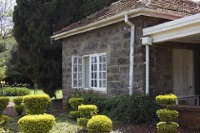
Karen Blixen was a notable Kenyan personality who lived and farmed on the outskirts of Nairobi from 1917 to 1931 when she returned to Denmark bankrupt and heartbroken at being forced to leave Africa. Writing under the name Isak Dinesen she authored acclaimed books including Out of Africa which inspired an Oscar winning film of the same name. The main building of the original farmhouse, M'Bogani House, now houses the Karen Blixen Museum and retains much of its original furniture and other photographs and items of interest. The museum is situated in the suburb of Karen, a short drive from the city centre.Those who have seen the much-loved movie, starring Meryl Streep and Robert Redford, may also be curious about the Muthaiga Country Club featured in the film: tourists can visit the original clubhouse, which is still active, but women won't be allowed in the members' bar - Karen Blixen is, to this day, the only woman who has been allowed to drink there. Fans of the movie should also note that although it was designed to look like it, the house in the film is not M'Bogani House. The stunning landscapes of the area, however, will be instantly recognisable.
Address : Karen Road, Langata, Nairobi
Website : www.museums.or.ke
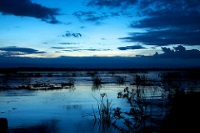
Along the southern shore of Lake Naivasha is the former home of naturalist and painter Joy Adamson, author of 'Born Free', which is now the Elsamere Conservation Centre, incorporating a guesthouse and a small museum. Visitors are invited to join the guests daily at 4pm for a sumptuous tea on the lawns of the beautifully peaceful lakeside setting, occasionally joined by the mischievous Colobus monkeys with a taste for cheesecake. The museum has displays portraying the true story of Joy and the lioness Elsa that she raised from birth, and her attempts to return her to the wild, as well as her paintings and personal artefacts. There is also a video shown about the story of Elsa the lioness.Lake Naivasha is a shimmering waterscape of floating hyacinth surrounded by mountains, and the skies above are pierced by the distinctive cries of the fish eagle. Brightly coloured kingfishers dart into the waters from their papyrus perches and ugly Marabou storks strut along the shoreline like cantankerous sergeant majors. The trees are home to Colobus monkeys and at night the earth shudders with the movement of grazing hippos. The southern shore of the lake is lined with hotels, campsites and guesthouses, prettily situated either on the shore or higher up on the slopes of the mountain with fantastic views over the lake. Boat trips are a popular way to explore the lake and also the private Crescent Island Game Sanctuary.
Address : Elsamere Conservation Centre, Moi South Lake Road, Lake Naivasha, Kenya
Website : www.elsatrust.org
Although tiny, this park has a high concentration of game with everything wildlife enthusiasts could wish for (except elephant). Lake Nakuru is one of Kenya's most important rhino sanctuaries. Apart from the rhino, there are several prides of lion and it is the best place to spot leopard. The surface of the shallow alkaline lake covers about a third of the park and the saline concentration supports a blue-green algae that attracts thousands of flamingos. This pulsating pink carpet covering the fringes of the lake is a breathtaking sight and at any disturbance the air above becomes a noisy confusion of long pink legs and reddish wings in flight. The flamingos, and generally rich birdlife, make the park extremely popular with bird watchers, although some ornithologists have complained that the lake is sustaining fewer and fewer birds. Large flocks of pelicans are also attracted to the rich food source in the lake and waterbuck and the rare Rothschild Giraffe are common sights along the shores. The park has several high points with good lookouts and waterfalls, and monkeys and baboon frequent the rocky cliffs. Watching the sun rise over Lake Nakuru is a special experience. As the park is so small, it is easy to explore it in a day.
Website : www.kws.go.ke/lake-nakuru-national-park
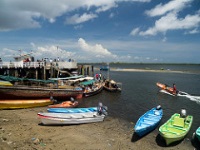
A gentle and relaxed holiday destination, Lamu is Kenya's oldest inhabited town and the unhurried way of life has changed little over the centuries. Part of the Lamu Archipelago, Lamu town (on Lamu Island) is reached by boat from the mainland. The narrow, winding streets are crowded with pedestrians, markets, vendors and donkeys. Lamu's lovely old Arab houses feature intricately carved doors and lintels, and mosques decorate the streets of one of the last remaining Swahili towns from a civilisation that used to be the cultural force along the coast.A dhow trip is a mandatory holiday outing and sailing around the little islands or to the beautiful beaches is a memorable experience. There are plenty of tour guides ready to show tourists around the archipelago by dhow, and visitors can find them along the seafront by looking for the bright blue shirts of the Promise/Ahadi organisation. The Takwa ruins on Manda Island and ancient settlements on Pate are great attractions to visit. Shela Beach, on the north end of Lamu island, is a beautiful white sand beach popular for sunbathing and watersports. For a sense of local history and Swahili culture, visitors can explore the Lamu Museum, the Swahili House Museum, or Lamu Fort.
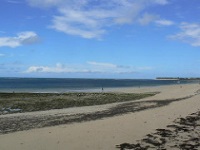
Situated on the beach 60 miles (40km) north of Mombasa is the lazy, unashamedly hedonistic holiday resort of Malindi. For most the main attraction is the dazzling white sandy beaches that line the shore. However, for the more adventurous, there is also excellent fishing to be done while on holiday in Malindi. Trips leave early in search of barracuda, tuna and marlin, before the heat of the day sets in.One of the few authentic Portuguese relics left on the coast can be found on the cliffs at the southern end of Malindi harbour - the cross of Vasco da Gama bears the Portuguese coat of arms and commemorates his arrival here in 1498, definitely worth seeing on any Malindi holiday.South of Malindi are the Watamu and Malindi Marine National Parks. These protected areas of white coral beaches and stunning blue lagoons are a major holiday attraction for snorkellers and scuba divers. Malindi holidaymakers are also drawn here as the sea is crystal clear in contrast with the Malindi holiday resorts' waters, which are muddied by the Sabaki River. Between the two marine parks is the abandoned 15th century Swahili town of Gedi, where visitors can wander around the ruins of the palace, market place, houses, mosques and pillared tombs.
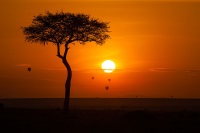
Kenya's most visited park, commonly known as the Mara, is a wildly beautiful place with rolling savannah grasslands. It is an extension of the Serengeti Plains in neighbouring Tanzania. Much of the film Out of Africa was filmed here and it offers wonderful views and an extraordinary concentration of wildlife, including the 'Big Five'. It has the largest population of lion in Kenya, and large herds of grazers also attract many other predators such as cheetah, leopard and hyena.The annual highlight is the Great Wildebeest Migration, creating one of the world's supreme natural spectacles, when an estimated two million animals form one large herd and leave the dry plains of Tanzania to seek greener pastures in the north, arriving in the Mara from late June onwards and returning again in October. Their entrance into the Mara makes a breathtaking spectacle, as they cross the crocodile infested waters of the Mara River. A once in a lifetime way to experience the magic of an African dawn over such a wilderness is by hot air balloon, drifting silently over the herds below. These can be booked through any safari company and operate daily from several of the lodges in the reserve.Also within the reserve is a Masai village that holds demonstrations of traditional dances and music as a source of tourist income for the local communities of the Masai Mara National Reserve. Traditionally the lands were used by the Masai for their herds of cattle and the settlement programs set up to compensate for their displacement have only recently been accepted, albeit reluctantly. The proud warriors have become a symbol of tribal Kenya with their beadwork, feathers, spears, decorated gourds and red blankets. Today the Masai communities are allowed to hunt and graze their animals in the reserve, and the occasional flash of red glimpsed between the thorn trees and bush on the fringes of the Mara has become a natural part of the Mara's character.
Address : Narok County, Kenya
Website : www.maasaimara.com/
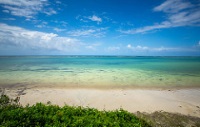
The hot and humid holiday destination of Mombasa is the biggest port on the east coast of Africa, serving five different countries and located at the beginning of the only railway that crosses the Kenyan interior, built by the British in 1901. Mombasa is situated on an island linked to the mainland by bridges and surrounded by a natural harbour where commercial shipping mixes with traditional sailing dhows.The main Mombasa holiday attraction is the commanding 16th-century fort protecting the entrance of the harbour, Fort Jesus, whose remnants relay the story of a historic struggle for control of the coast between the Portuguese and Arabs. Behind this, on Treasury Square, is the Government Game Department's Ivory Room, exhibiting elephant tusks, rhinoceros horns, hippopotamus teeth and other animal trophies confiscated from poachers or taken from dead animals on the reserve.Mombasa's Old Town retains a strong Arab flavour and is the true heart of the city, with an intricate pattern of winding streets alive with the colours of the traditional wrap-around clothing, crammed with faded houses and street sellers, and filled with the heavy scent of spices. It is best to visit the Old Town with an official guide when on holiday, as mugging is not uncommon.As a large city, Mombasa operates as the holiday hub of the coastal tourism trade, despite its lack of attractive beaches, so most visitors stay long enough to look around before heading either north or south to one the beautiful beach resorts nearby.
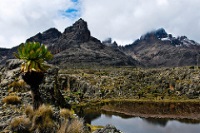
This national park encompasses Africa's second highest mountain, Mount Kenya, an extinct volcano with a series of jagged snow-covered peaks. The local Kikuyu people revere the mountain they call Kirinvaga or 'Place of Light' as the home of their Supreme Being, Ngai, and traditionally Kikuyu homes are built to face the sacred summit. Part of the attraction is the incredible variation in flora and fauna found on the mountain due to the changes in altitude and its position on the equator. The slopes are covered in thick forest, home to a variety of animals including the black leopard. Bamboo, moorland and alpine vegetation give way to rock, ice and one of the world's rarest sights - equatorial snow. The summit is a technical climb, but Point Lenana is a popular trekkers' objective; it is the third highest peak and can be reached by a number of different scenic routes, lasting from three to five days. The Mount Kenya National Park is a paradise for climbers who come to summit the various peaks and test themselves against the mountain. For those not wishing to climb the park offers a pristine wilderness, lakes and glaciers, and is good for game viewing and hiking.
Address : Mount Kenya National Park, Kenya
Website : www.kws.go.ke/content/mount-kenya-national-park-reserve
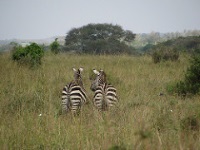
Nairobi National Park was established in 1945 and is Kenya's first national park. Uniquely situated on the capital's doorstep it is a well-kept, compact and beautiful area of plains and wild bush containing a large number of Africa's best-known animals. Large herds of zebra, wildebeest, buffalo and giraffe roam the plains and black rhino, ostrich, baboons, cheetah, leopard and lions are some of the other photogenic inhabitants.In the park is the Animal Orphanage where sick, wounded and abandoned animals are cared for and rehabilitated into the park, as well as an Educational Centre featuring a Safari Walk. Other attractions include the Ivory burning site Monument and some wonderful picnic areas popular for corporate functions, weddings and the like.Close by is the Sheldrick Elephant Orphanage, where infant elephant and rhino (orphaned because of poaching activities) are cared for and eventually returned to the wild in Tsavo National Park. The centre is open every morning and visitors can watch the calves bathing in the mud hole and being bottle fed by their human surrogate mothers. Seeing these baby animals playing and interacting with them is a special experience and the Elephant Orphanage is one of the top attractions in Kenya for many visitors.
Address : Nairobi, Kenya
Website : www.kws.go.ke/parks/nairobi-national-park
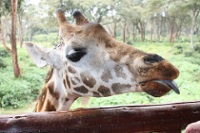
Experience giraffes up close and personal at this wonderful centre dedicated to the preservation of the endangered Rothschild giraffe. Not only can you watch them from very close but visitors can experience the rare pleasure of hand-feeding these graceful and gentle creatures from a platform at eye-level with the animals: you can touch them, have them take food out of your hands, or even put a pellet in your mouth and enjoy a sloppy giraffe kiss! The photo opportunities are simply superb. You can also enjoy the nature walk in a lovely area with 160 species of bird and some amazing trees. There are warthogs and giant tortoises to meet as well. This is the single best attraction for children in Nairobi and there are often groups of school kids that come for tours. Guides at the centre give educational talks and answer any questions you may have. Betty and Jock Leslie Melville founded the Giraffe Centre in 1979 to preserve the Rothschild giraffe of which only 120 remained in existence; it is a non-profit organisation and all fees go towards the conservation of these wonderful animals. The manor house on the estate is very charming and a popular venue for weddings and other events.
Address : Giraffe Centre, Duma Road, Nairobi
Website : www.giraffecenter.org/
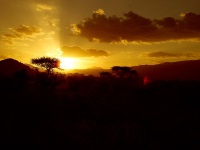
The vast Tsavo National Park is only an hour's drive from Mombasa along the main highway to Nairobi, and for administrative purposes is divided into the East and West. Covering 8,422 sq miles (21,812 sq km), the park is home to giraffe, buffalo, antelopes, monkeys, many exotic birds and Kenya's largest herds of elephant. The elephant often look startlingly red, covered in the dust and mud of the region's ruddy soil. Visitors are also likely to see rhinos - after being virtually wiped out by poachers in the 1980s their population now numbers almost 200; most are found in the Ngulia Rhino Sanctuary. Poaching has now practically been eliminated and the elephant population is also increasing; there are now around 5,000 animals, up from 3,000 in 1985, but still short of the 25,000 that are estimated to have roamed the park in the 1960s. Another exciting attractions is an observation tank in one of the park's pools from which visitors can get a close-up view of hippos, crocodiles and tropical fish in their natural habitat. Some of the roads in the park are in bad condition and it can be difficult driving but if you head out on organised game drives there'll be no problem.
Address : Tsavo, Kenya
Website : www.tsavopark.com/

Travel Guide powered by Word Travels, copyright © 2023 Globe Media Ltd. By its very nature information in this travel guide is subject to change at short notice and travellers are urged to verify information on which they're relying with the relevant authorities. Neither Globe Media Ltd nor Travel Vogue can accept any responsibility for any loss or inconvenience to any person as a result of information contained above.